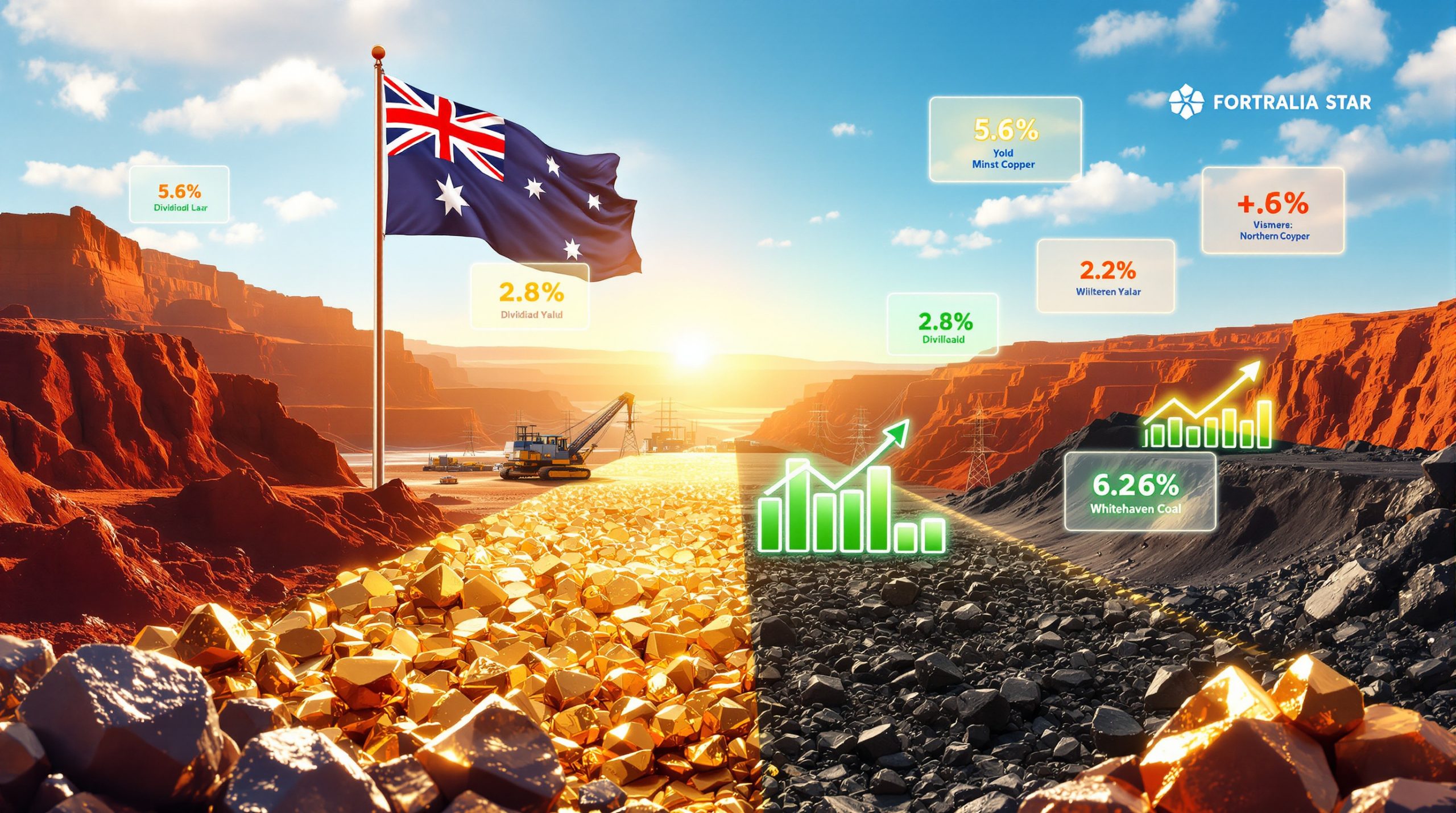Understanding Glencore's Trading Profits: Market Dynamics and Future Outlook
Glencore, one of the world's largest commodity trading companies, faces significant headwinds in its trading division as market conditions shift dramatically in 2025. The company anticipates continued declines in commodity marketing profits, primarily driven by fading market volatility following the Russia-Ukraine conflict. During peak volatility periods between 2022-2023, Glencore's trading division contributed between 30-45% of total profits, highlighting the significant impact of current market normalization on the company's overall performance.
As noted by Bloomberg analyst Thomas Biesheuvel, Glencore's traders are "adapting to a new normal" as geopolitical disruptions that once created exceptional trading opportunities gradually subside. This transition has forced the trading giant to recalibrate its strategies and expectations.
The company's profitability remains closely tied to arbitrage opportunities—taking advantage of price discrepancies between different markets. However, these opportunities have narrowed significantly between 2024-2025 due to stabilized supply chains and more predictable market movements.
For context, the Russia-Ukraine conflict in 2022 generated record energy trading margins for Glencore, contributing to an impressive adjusted EBITDA of $34.1 billion that year. The contrast with current projections demonstrates how exceptional those market conditions were and highlights the challenges Glencore now faces in maintaining similar profit levels in a more stable environment.
What is Glencore's Trading Business Model?
The Commodity Trading Powerhouse
Glencore has established itself as a dominant force in global commodity markets, operating in more than 35 countries and trading over 60 commodities. The company controls approximately 25% of global seaborne thermal coal, illustrating its substantial market influence across key resource categories.
The firm's business model uniquely combines extensive physical commodity trading operations with direct ownership of mining assets across multiple continents. This integrated approach creates significant synergies that pure trading houses cannot replicate.
As CEO Gary Nagle emphasizes, the "synergy between physical assets and market intelligence" provides Glencore with a critical competitive advantage, enabling real-time arbitrage opportunities that would otherwise remain invisible or inaccessible to competitors.
How Glencore's Trading Division Generates Profits
Glencore's trading profits emerge from several sophisticated strategies that leverage its global presence and integrated model. The company combines mining operations (approximately 60% of revenue) with advanced logistics optimization, including proprietary shipping routes that significantly reduce transportation costs.
Arbitrage opportunities represent a cornerstone of Glencore's trading strategy. In 2023, the company capitalized on nickel price disparities between the London Metal Exchange (LME) and Shanghai markets, generating an impressive $1.2 billion in arbitrage profits alone.
Strategic storage plays a crucial role when markets are in contango (where future prices exceed spot prices). By purchasing commodities at current prices and simultaneously selling futures contracts at higher prices, Glencore locks in profits while utilizing its extensive global storage facilities.
Risk management services provide another revenue stream, as Glencore offers sophisticated hedging solutions to both producers and consumers seeking to minimize their exposure to price volatility.
Market intelligence represents perhaps Glencore's most valuable asset. The company's global network of offices and operations provides real-time information on supply, demand, and pricing trends that often precede public market movements.
Why Are Glencore's Trading Profits Declining in 2025?
Reduced Market Volatility Impact
The primary driver behind Glencore's declining trading profits in 2025 is the significant reduction in market volatility. Global commodity volatility indices, such as CBOE's GVZ, have fallen approximately 40% year-to-date in 2025, substantially eroding arbitrage margins that traders rely upon.
This volatility reduction stems from the normalization of supply chains that were severely disrupted during the pandemic and the Russia-Ukraine conflict. During those exceptional periods, price dislocations created abundant profit opportunities for sophisticated trading operations.
The contrast between natural gas trading margins illustrates this shift dramatically. In 2022, when European energy markets experienced unprecedented turbulence, Glencore achieved natural gas trading margins of approximately 27%. By 2025, these margins have compressed to around 9% as market conditions stabilized.
Industry analysts specifically cite "reduced contango opportunities in oil markets" as a key factor diminishing energy trading revenues. Without significant price differentials between current and future delivery periods, the profitability of storage-based strategies has diminished considerably.
Economic Headwinds Affecting Trading Performance
The second major factor impacting Glencore's trading profits involves broader economic headwinds, particularly those stemming from Trump's commodity impacts. Tariffs on Chinese steel (25%) have significantly disrupted metals trading flows, lowering Glencore's Asian margins by approximately 12% in 2024.
These trade restrictions have created a cooling effect on global economic activity, reducing industrial demand for key commodities. The International Monetary Fund projects global trade growth of just 2.4% in 2025, compared to 4.7% in 2022, further contextualizing the shift in demand dynamics.
Price spreads between different grades of commodities have also narrowed, limiting opportunities to profit from quality arbitrage. This compression affects traders like Glencore who historically capitalized on these differentials through sophisticated blending operations and quality arbitrage.
Increased competition from other trading houses in this less volatile environment has further pressured margins. With fewer exceptional opportunities available, more trading entities compete for the same limited profit pools.
How Does Commodity Market Volatility Affect Trading Profits?
The Volatility-Profit Relationship
The relationship between market volatility and trading profits is fundamental to understanding Glencore's business model. Higher volatility creates more arbitrage opportunities across different markets as prices become less uniform globally.
During the COVID-19 pandemic in 2020, copper price dynamics reached 14% monthly volatility, generating approximately $2.8 billion in annualized trading profits for Glencore. These extreme price movements allowed traders to capitalize on temporary market inefficiencies.
As the CEO of competitor Trafigura noted, "Volatility is the lifeblood of trading—without it, margins compress industry-wide." This sentiment encapsulates why the current market normalization presents such a challenge for trading houses.
Glencore employs sophisticated algorithmic models to exploit volatility efficiently, executing approximately 70% of trades within 5-minute price windows. This technical advantage allows the company to capitalize on short-term price dislocations before markets can adjust.
Price dislocations enable traders to capitalize on regional supply-demand imbalances, particularly when logistical constraints prevent physical commodities from flowing quickly to the highest-priced markets.
Historical Profit Patterns During Market Disruptions
Examining historical market disruptions provides clear evidence of how exceptional volatility translates into trading profits. During the 2022 European gas crisis, Glencore profited approximately $3.1 billion from storage plays during extreme price spikes, demonstrating the magnitude of opportunity that market dislocations create.
The Russia-Ukraine conflict (2022-2023) generated exceptional trading profits across energy and metals as sanctions, shipping disruptions, and supply uncertainties created unprecedented price volatility.
Similarly, the COVID-19 pandemic (2020-2021) produced significant profits from market dislocations and supply chain disruptions as consumer patterns shifted dramatically and production facilities faced unprecedented shutdowns.
The 2008 Financial Crisis offered opportunities from extreme price movements and counterparty risk management, as traders with strong balance sheets could step in where financial institutions retreated.
The current normalization (2025) represents a return to more typical trading environments with lower margins, requiring trading houses to adapt their strategies accordingly.
What Are Glencore's Trading Profit Expectations for 2025?
Current Profit Projections
Financial analysts project approximately $5.2 billion in 2025 trading EBITDA for Glencore, representing a substantial 35% decline from 2022's peak performance. This adjustment reflects the company's adaptation to post-crisis market conditions.
Glencore's CFO Steven Kalmin has indicated a strategic pivot, noting that the company is "pivoting to structured products and longer-term hedging contracts" to create more sustainable revenue streams in less volatile markets.
The 2025 guidance emphasizes cost-cutting measures, with Glencore targeting approximately $500 million in operational savings across its trading division. These efficiency initiatives aim to maintain profitability despite compressed margins.
The company has also begun diversifying its trading portfolio, as evidenced by its 2024 acquisition of a lithium trader. This strategic move aims to capture approximately 15% of the EV battery materials market by 2026, positioning Glencore in faster-growing segments of the commodity landscape.
Comparative Analysis with Previous Years
The projected trading profits for 2025 represent a significant decline from the exceptional levels achieved during the Ukraine conflict period. During that time, geopolitical disruptions and extreme price volatility created ideal conditions for Glencore's trading strategies.
This normalization trend began in 2024 and continues into 2025, with quarterly results progressively aligning with pre-crisis performance levels. The company has been preparing investors for this adjustment, emphasizing sustainable long-term growth rather than exceptional short-term gains.
Glencore's management has been careful to frame current projections as a return to pre-crisis profit levels rather than a fundamental deterioration of the business model. This perspective helps manage investor expectations while acknowledging the cyclical nature of commodity trading profitability.
The adjustment to more sustainable profit margins reflects a broader industry trend, with competitors like Vitol projecting similar normalization in their financial outlooks.
How Does Glencore Compare to Other Commodity Trading Houses?
Competitive Landscape Analysis
In the competitive landscape of global commodity trading, Glencore maintains several distinctive advantages despite industry-wide profit compression. The company's 2024 revenue of approximately $240 billion exceeds that of competitor Trafigura ($180 billion), though Glencore lags behind Vitol in specific segments such as oil trading volume.
All major trading houses—including Trafigura, Vitol, and Mercuria—are experiencing similar profit pattern trends as market volatility subsides. However, analysts at S&P Global note Glencore's "unique edge in copper, where it controls 12% of global mining output," highlighting the advantage of the company's integrated model.
Varying exposure to different commodity classes affects relative performance across trading houses. Glencore's stronger position in metals, particularly copper and nickel, provides some insulation against energy market fluctuations.
Technology and data analytics investments have become key competitive differentiators in this lower-margin environment. Glencore's substantial investments in proprietary trading platforms and artificial intelligence capabilities aim to preserve its competitive position despite broader market challenges.
Strategic Advantages in Current Market
Glencore's diversified commodity portfolio provides resilience against single-market downturns, allowing the company to shift resources and focus toward segments with more favorable conditions.
Unlike pure trading houses, Glencore's mining division provides approximately 40% of its traded commodities internally, significantly reducing procurement costs and providing unique market insights. This vertical integration creates margin advantages evident in specific metals—in 2023, Glencore's zinc trading margins (8%) outperformed Trafigura's 6.5%.
The company's global logistics network enables cost-effective commodity movements, particularly important as transportation costs have become a more significant component of overall trading margins in less volatile markets.
Long-standing relationships with producers and consumers create preferential access to physical commodity flows, another crucial advantage that helps maintain trading volumes despite reduced arbitrage opportunities.
What Strategies Is Glencore Implementing to Maintain Profitability?
Operational Adaptations
Glencore has allocated approximately $1.5 billion to AI-driven trading systems in 2025, targeting efficiency gains of around 15%. These technological investments aim to identify smaller arbitrage opportunities that might otherwise go unnoticed in less volatile markets.
Cost efficiency and operational streamlining have become top priorities, with the trading division implementing enhanced risk management protocols specifically designed for the lower-margin environment.
The company's CTO Jamila Abbas notes that "our blockchain platform reduces settlement times from days to hours," improving capital efficiency and reducing counterparty risks.
Diversification into emerging commodity markets with higher volatility represents another adaptation strategy. For example, Glencore's "Green Nickel" initiative ties approximately 20% of 2025 trades to ESG benchmarks, appealing to EU buyers subject to stringent environmental regulations.
Long-term Strategic Initiatives
Beyond immediate operational adaptations, Glencore is pursuing several long-term strategic initiatives to maintain profitability. A 2024 pilot program with shipping giant Maersk optimized cobalt shipments from the Democratic Republic of Congo, cutting logistics costs by approximately 18% and demonstrating the potential for supply chain optimization.
The company is expanding value-added services beyond pure trading, developing specialized financing solutions for commodity producers, particularly in emerging markets where capital access remains challenging.
The integration of sustainability metrics into trading decisions reflects both regulatory trends and market demand for responsible sourcing. This initiative positions Glencore favorably as ESG considerations increasingly influence purchasing decisions.
Strategic acquisitions to strengthen market position in key commodities represent another pillar of Glencore's long-term strategy, with a particular focus on energy transition metals like lithium, cobalt, and nickel.
How Do Geopolitical Factors Impact Glencore's Trading Business?
Trump Administration Trade Policies
The Trump administration's trade policies have created significant ripple effects throughout global commodity markets. Tariffs on Chinese rare earths introduced in 2024 have raised Glencore's procurement costs by approximately $220 million annually, directly impacting trading margins.
These trade restrictions have altered established global commodity flows, forcing Glencore to develop alternative supply routes and trading patterns. While disruptive, these changes have created new arbitrage opportunities for traders with sufficient global reach and flexibility.
Increased compliance requirements associated with verifying product origins and adhering to complex tariff structures have added operational burdens to trading operations, particularly in metals markets where supply chains span multiple countries.
Regional price disparities resulting from policy interventions create both challenges and opportunities for sophisticated traders. Glencore's global network allows it to redirect commodity flows to markets offering the highest net returns after accounting for tariffs and regulations.
Global Economic Cooling Effects
Beyond specific trade policies, broader economic cooling has affected commodity trading profitability. Reduced industrial activity, particularly in manufacturing hubs across Asia and Europe, has led to lower commodity demand and less dynamic pricing.
The Eurasia Group warns that "Glencore's reliance on Congolese cobalt exposes it to 2025 election risks" in the Democratic Republic of Congo, highlighting the ongoing geopolitical vulnerabilities in critical supply chains.
Changing inventory management practices among consumers, who are maintaining lower stock levels in uncertain economic conditions, have reduced demand for Glencore's risk management services.
The European Union's Carbon Border Adjustment Mechanism (CBAM) adds approximately $8 per ton to aluminum imports, affecting 2025 margins and illustrating how environmental regulations increasingly shape trading economics.
Sanctions on Russian supply chain impact forced Glencore to reroute approximately 30% of nuclear fuel trades via Kazakhstan in 2024, demonstrating the logistical complexities created by geopolitical tensions.
What Role Does Technology Play in Modern Commodity Trading?
Digital Transformation in Trading Operations
Technology has fundamentally transformed commodity trading, with Glencore at the forefront of this digital revolution. The company's AI models process an impressive 2.5 million data points per hour to predict Brent crude trends, providing traders with predictive insights that were unimaginable a decade ago.
Advanced analytics provide a competitive edge in identifying fleeting market opportunities. As CEO Gary Nagle notes, "Machine learning identifies arbitrage chances humans miss," highlighting the increasing importance of algorithm-driven decision-making.
Algorithmic trading systems enable faster execution of strategies, with reduced latency offering significant advantages in volatile markets. In Q4 2024, these algorithmic trades accounted for approximately 45% of Glencore's wheat futures profits.
Blockchain applications are improving transparency and transaction efficiency, reducing counterparty risk and streamlining settlement processes that traditionally required extensive documentation and verification.
AI-powered market intelligence tools enhance decision-making processes by analyzing vast datasets including shipping movements, weather patterns, and social media sentiment that might affect commodity prices.
Glencore's Technology Investments
Glencore has developed proprietary trading platforms designed for specific commodity markets, optimizing execution strategies for the unique characteristics of each product. The company's X-Sight platform integrates IoT sensors from mines to track real-time inventory levels, providing unparalleled visibility into physical commodity flows.
Data integration systems connect global operations in real-time, allowing traders in different regions to coordinate strategies and capitalize on geographic arbitrage opportunities. This connectivity represents a significant advancement from the siloed information systems of previous decades.
Risk management technologies for complex multi-commodity positions have become increasingly sophisticated, allowing traders to understand potential correlations and vulnerabilities across diverse portfolios.
Digital supply chain solutions are optimizing logistics and inventory management, reducing costs, and improving capital efficiency. The company's blockchain initiatives aim to digitize traditionally paper-based commodity transactions, reducing administrative overhead and accelerating payment cycles.
What Future Trends Will Shape Commodity Trading Profitability?
Emerging Market Dynamics
The future of commodity trading will be significantly influenced by shifting global consumption patterns, particularly in developing economies. BloombergNEF
Ready to Stay Ahead of the Next Mineral Discovery?
Don't miss out on significant investment opportunities in the ASX mining sector – Discovery Alert's proprietary Discovery IQ model delivers instant notifications when major mineral discoveries are announced, giving you the market edge that matters. Visit our discoveries page to explore how historic mineral discoveries have generated exceptional returns and begin your 30-day free trial today.




